Tokyo in Japanese means the Eastern Capital. This name was given to the samurai city of Edo after the capital was moved here from Kyoto in the second half of the 19th century. The largest city in Japan never ceases to amaze travelers with its cleanliness, convenient transportation, and friendliness of the locals who are ready to overcome language barriers and help their foreign guests. Tokyo attracts everybody interested in modern Japan: fans of contemporary architecture and street fashion, video games, and unusual cafes.
- Tours
- Sakura in Japan
Japan Tour “Sakura Season in Japan”
Tour to Japan in late March and early April for the cherry blossoms. Cherry blossoms are truly a big event in Japanese life. And to understand why the Japanese love sakura so much, we will go on this tour to the most iconic sakura places, such as Kamakura Great Buddha, Chureito Pagoda, gardens and temples of Kyoto, Shirakawa-go village and Hida-Takayama, walk through the ancient capital city of Nara and admire White Heron Castle Himeji-jo drowned in cherry blossoms.

CUSTOMIZED ITINERARY FOR YOUR DATES
Dates
- Private tour
Duration
- 12 days / 11 nights
Price
- On request
Itinerary
- Tokyo → Kamakura → Kawaguchiko → Kyoto → Nara → Himeji → Hiroshima → Miyajima → Iwakuni → Nagoya → Takayama → Shirakawago → Kanazawa → Tokyo
Daily itinerary
Day 1
Meet your tour guide at the Arrivals
Transfer to Tokyo by private transport
Tokyo Sightseeing: Shibuya district and Shibuya Sky observatory, statue of the dog Hachiko, walk around Ginza
Check-in at the hotel, rest

Tokyo
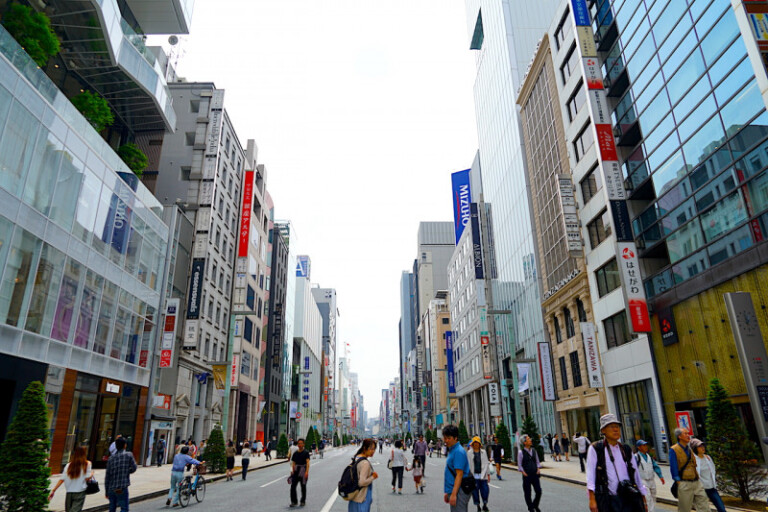
Ginza District
Ginza is Tokyo’s most luxurious shopping district, home to prestigious department stores, world-famous designer boutiques, coffee shops, and traditional Japanese restaurants. People come here to learn about the latest high fashion trends and enjoy the creations of the best architects worldwide.
At the same time, Ginza is an art lover’s paradise. There are about 200 art galleries and Kabukiza Theater, which still regularly hosts Kabuki theater performances.
Day 2
Meet your tour guide at the hotel lobby
Tokyo sightseeing by private transport: Asakusa district, Sensoji Buddhist Temple, Nakamise shopping street, TeamLab museum, Japanese garden
Back to the hotel
Day 3
Meet your guide at the hotel lobby
Move to Kamakura by private transport
Kamakura Sightseeing: Great Buddha of Kamakura, Hasedera Temple
Move to Fuji-Kawaguchiko
Transfer to the national-style ryokan hotel
Dinner at the hotel, rest in the hot springs
Day 4
Meet your guide at the hotel lobby
Fuji-Kawaguchiko area sightseeing: Chureito pagoda, traditional village
Transfer to the Shinkansen station
Move to Kyoto by Shinkansen bullet train
Check-in at the hotel
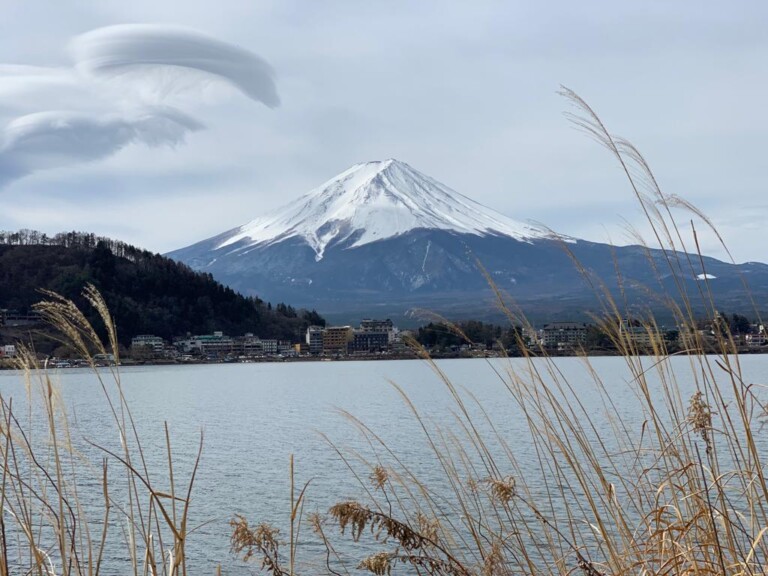
Mount Fuji
Fuji is an active stratovolcano on the Japanese island of Honshu, 100 kilometers southwest of Tokyo, on the border of Shizuoka and Yamanashi prefectures. The height of the volcano is 3,776 m. The circumference of the volcano’s base is 125 kilometers, and the diameter is 40-50 kilometers. The crater’s rim is about 500 meters, and the depth is about 250 meters. There are eight peaks around the crater, each with its name. The highest point of Fujisan is Kengamine Peak. The volcano is active; the last eruption was back in 1707-1708.
The mountain and its surroundings are part of the Fuji-Hakone-Izu National Park and have been a UNESCO World Heritage Site since 2013.
There are a Shinto temple, a post office, and a weather station on the top of Mount Fuji.
The mountain has a perfect conical shape and is considered sacred, serving as a religious pilgrimage and a tourism site. For centuries the beautiful outline of Fuji has been a popular theme in Japanese art.
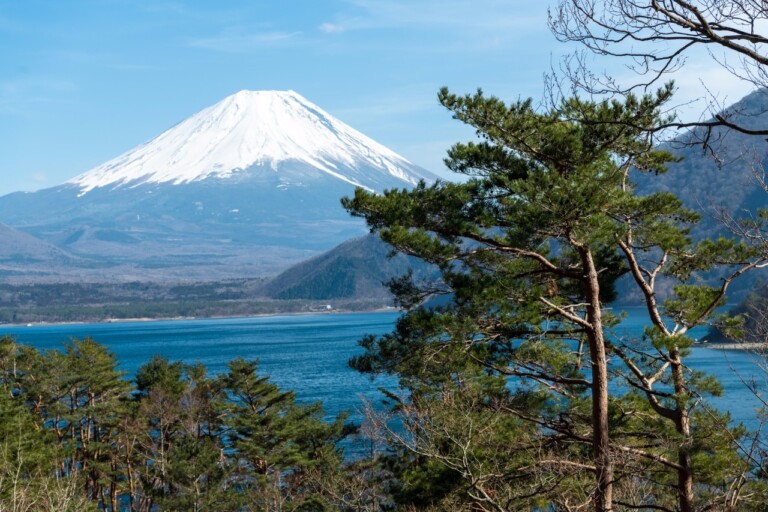
Fuji Five Lakes Area
On the northern slope of Mount Fuji, lava from volcanic eruptions 50-60 thousand years ago blocked the flow of rivers and formed a chain of lakes. Beautiful lakes are filled with the purest water from the mountain rivers and are surrounded by untouched forests. Each of the lakes has a unique view of the sacred mountain. The perfectly shaped Fujisan in the background makes the sight truly unforgettable.
Day 5
Meet your guide at the hotel lobby
Kyoto Sightseeing: Golden Pavilion Kinkakuji, Ryoanji temple with Zen Rock Garden, cherry blossoms at Hirano Shrine, Maruyama park with sakura, traditional streets of Kyoto

Kinkaku-ji (Golden Pavilion)
Kinkaku-ji Temple, often called the Golden Temple, is one of Japan’s most famous temples and Kyoto’s main attractions. Built at the end of the 14th century, this complex, with its three-story pavilion covered with gold leaf, captivated the minds of its contemporaries. The famous Japanese writer Yukio Mishima captured its fate and glory in the novel “The Golden Temple.” Today Kinkaku-ji Temple is a must-see on any traveler’s itinerary in Japan. In addition to the famous pavilion, the UNESCO World Heritage Site also features a traditional walking garden, small waterfalls, and a tea house, representing the culture of the samurai era.
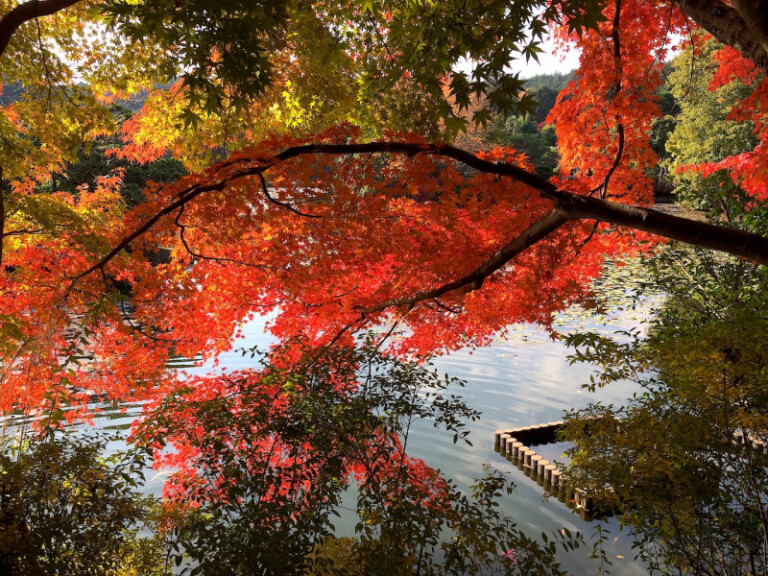
Ryōan-ji Temple (autumn)
Ryōan-ji Temple, located in northern Kyoto, was founded in the mid-15th century. The famous rock garden was also established at the same time. The garden is now considered one of the best in Japan and is protected as a UNESCO World Heritage Site.
For centuries, the Ryōan-ji Temple garden has attracted visitors trying to solve its mystery: why can you see only 14 of the 15 stones? And what does the composition of sand and rocks represent?
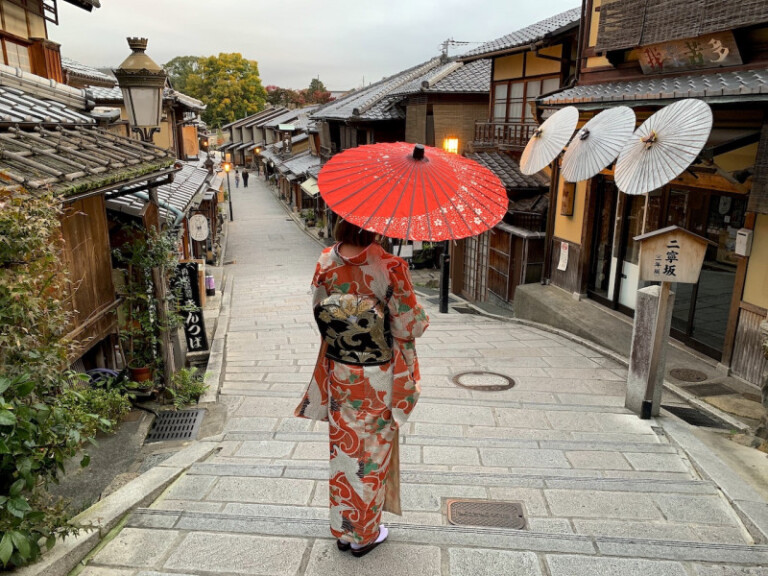
Gion (Geisha District)
Geisha district Gion is Kyoto’s largest and most vivid geisha district. Its history dated to the Middle Ages when restaurants and tea houses for pilgrims began to open around Yasaka Shrine. The picturesque streets of the district are filled with traditional houses with wooden facades, running rickshaws, geisha, and their apprentices (maiko), who still live in Gion and entertain guests every night with their dancing, talking, and table games.
Day 6
Meet your tour guide at the hotel lobby
Move to Nara
Nara sightseeing: Todaiji Temple, Kasuga Shrine, Deer park
Return to Kyoto

Kasuga Shrine
Kasuga Taisha is one of Japan’s most ancient Shinto shrines, founded in the mid-8th century to protect the capital, Nara. A UNESCO World Heritage site, it is famous for its kasuga-zukuri architectural style, the thousands of stone and bronze lanterns decorating its grounds, and the pristine ancient forest where sacred deer, considered messengers of the deities, roam free.

Todai-ji Temple
Todai-ji is a Buddhist temple complex whose main building is one of the largest wooden structures in the world. Built in the mid-8th century by order of the emperor with donations from all over the country, the temple features the biggest bronze statue of Buddha in Japan. Almost all the bronze produced in Japan at the time was used to cast the colossal sculpture. The complex also has several unique wooden structures, including the giant Nandaimon Gate with the famous Nio guard figures, the Bell Tower, and Nigatsu-do Hall. The entire complex is a UNESCO World Heritage Site.
Day 7
Meet your guide at the hotel lobby
Move to Himeji by Shinkansen bullet train
Visiting White Heron Castle Himeji-jo
Transfer to Hiroshima by Shinkansen bullet train
Check-in at the hotel
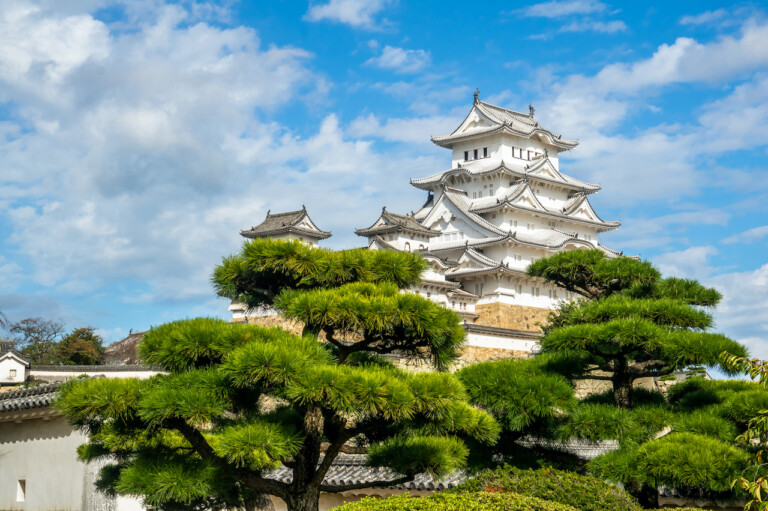
Himeji Castle
Himeji Castle is one of Japan’s 12 historically preserved castles and is considered the most beautiful. It is a UNESCO World Heritage Site. The castle was built in the early 17th century and was second in size and beauty only to the lost Edo Castle, the residence of the Tokugawa shoguns. Unscathed by wars, fires, and natural disasters for 400 years, the castle is often featured in movies about the samurai era. Fans of classic Japanese cinema remember it for Akira Kurosawa’s “Ran.” The impregnable castle holds secrets of Japanese military strategy and keeps stories of gods and ghosts. The name “White Heron Castle” reflects the beauty of its walls.
Day 8
Meet your guide at the hotel lobby
Move to Miyajima island
Walking tour at Miyajima: Otorii Gate - one of Japan's three most beautiful landscapes, Itsukushima Shrine
Move to Iwakuni, visit Iwakuni Kintaikyo Bridge
Transfer to Nagoya by Shinkansen bullet train
Check-in at the hotel
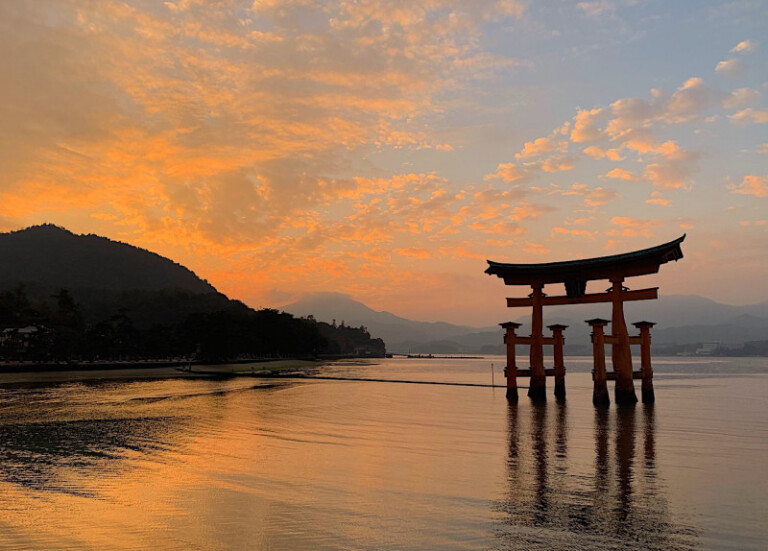
Itsukushima Shrine
Itsukushima Shrine is one of Japan’s most famous Shinto shrines located on the island of Itsukushima (also known as Miyajima Island). The sight of the main torii gate set in the sea is one of Japan’s three most famous views. The shrine was founded in the 6th century and took its present form in the 12th century when it was extensively expanded and rebuilt by Taira no Kiyomori. The buildings we see today were built in the mid-16th century, although they are similar in design to those of the Taira clan era. The “floating” shrine is a UNESCO Cultural Heritage Site and a National Treasure of Japan.

Brocade Bridge (Kintai Bridge) in Iwakuni
This five-arch wooden bridge on the banks of the Brocade River in Iwakuni is one of Japan’s most beautiful bridges. The ancient construction of the bridge is familiar to many from Japanese engravings, and it’s a popular place for photoshoots.
Day 9
Meet your guide at the hotel lobby
Move to Takayama by limited express train
Hida-Takayama Sightseeing: Takayma-jinya, the old streets of “Little Kyoto” - Takayama City
Check-in at the hotel, rest

Takayama
The city of Takayama, located in the Hida mountain region, has been known since the Middle Ages for its artisans, who were even invited to build the Imperial Palace in Kyoto. The old city area has the atmosphere of medieval Japan: traditional houses with numerous stores and small museums (including the museum of the famous Takayama Matsuri festival), restaurants, and cafes. A market of local products opens every morning on the old city square.
Day 10
Meet your guide at the hotel lobby
Move to Shirakawa-go traditional village by private transport
Walking tour around Shirakawa-go village: observation deck, gassho style traditional house
Move to Kanazawa, visit Kenrokuen Garden - one of Japan's three most beautiful landscape gardens
Move to Tokyo by Shinkansen bullet train
Check-in at the hotel, rest

Shirakawa Village
Shirakawa-go (Shirakawa Village) in Gifu Prefecture and Gokayama Village in neighboring Toyama Prefecture are UNESCO World Heritage Sites and “an example of traditional life adapted to the environment.” The Shirakawa-go lies in the heart of the Japanese Alps and is surrounded by mountains. Its geographic location and climate make it one of the snowiest places in Japan. This has led to a unique local architectural style, gassho-zukuri, meaning “palms folded in prayer,” which is what the pointed, reed-covered roofs of the houses resemble.
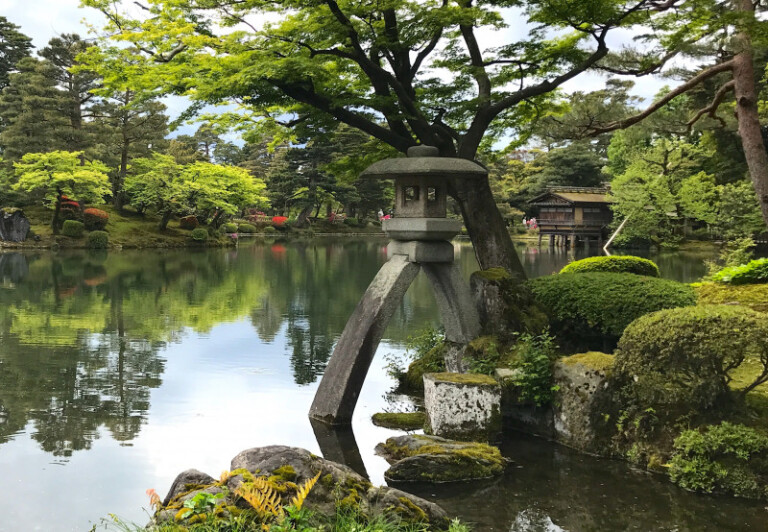
Kenrokuen Garden
One of Japan’s three most beautiful traditional gardens, the Garden of the Six Sublimities, was laid out in the second half of the 17th century near the walls of Kanazawa Castle for the enjoyment of the rulers of the Maeda clan.
The owners of Kanazawa Castle and the vassals of the Maeda clan who had access to the garden loved it for its beauty and harmony.
The name Kenrokuen, “The Garden of Six Sublimities,” was taken from the Song Dynasty Chinese poet Li Gefei’s “Chronicles of the Famous Gardens of Luoyang.” The book listed six virtues an ideal garden should have: spaciousness, seclusion, artificiality, antiquity, abundant water, and broad views.
Day 11
Free day in Tokyo
Day 12
Meet your tour guide at the hotel lobby
Transfer to the airport by private transport with a guide
Departure
